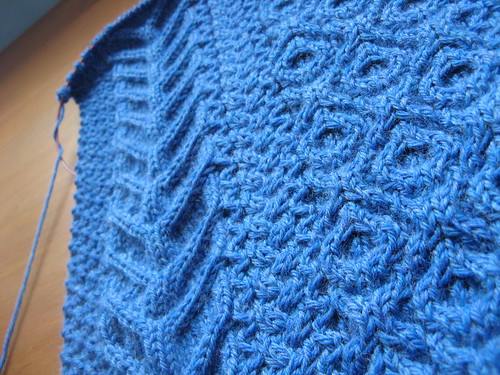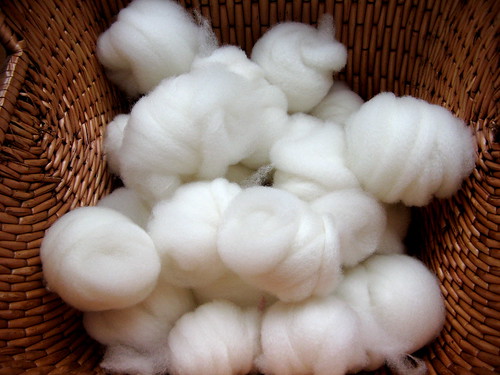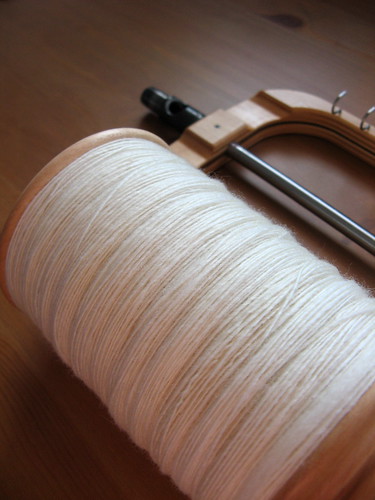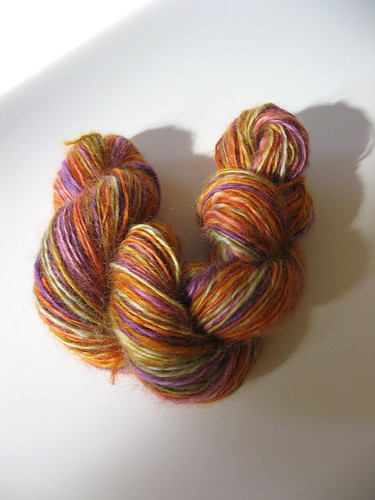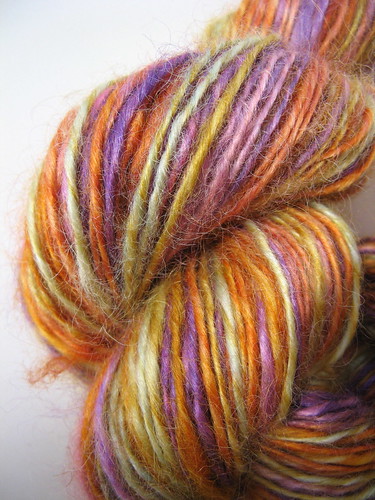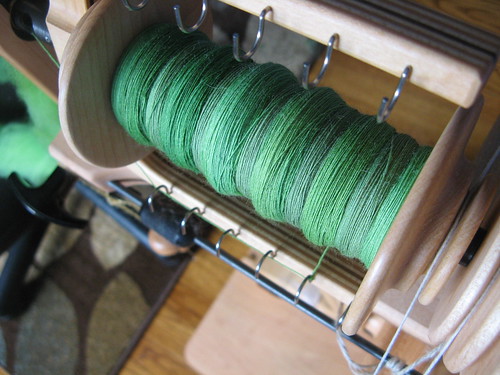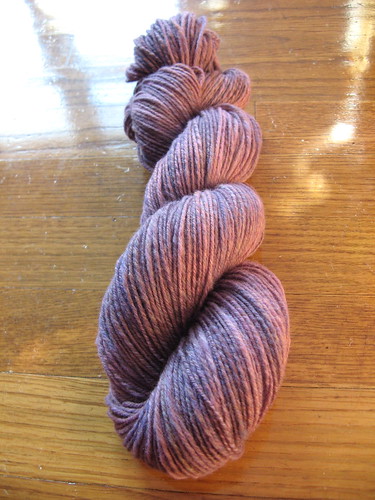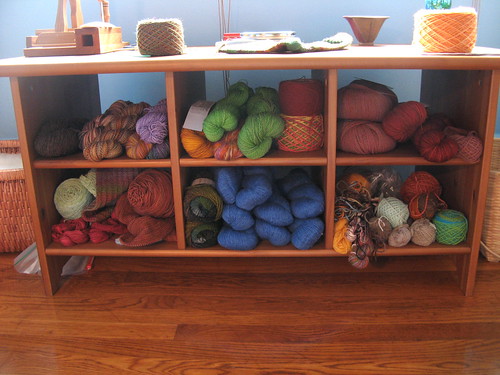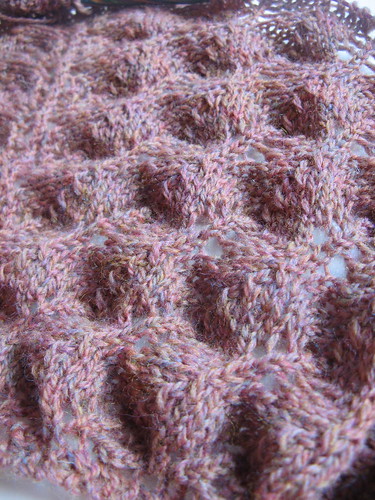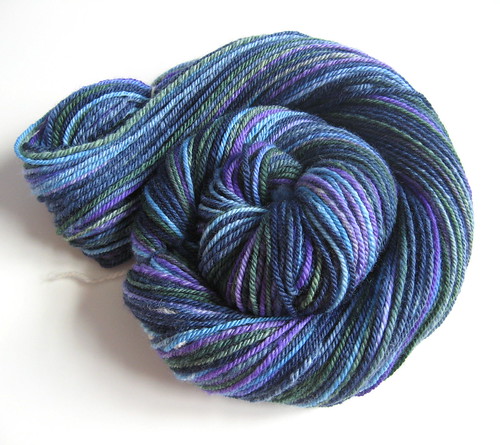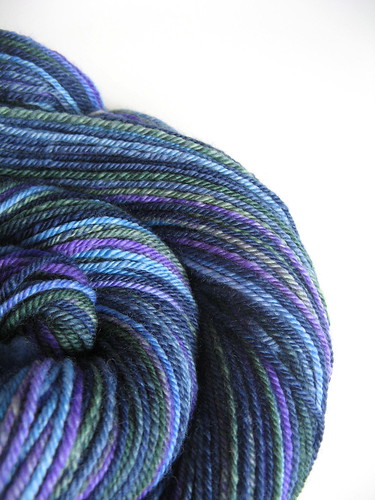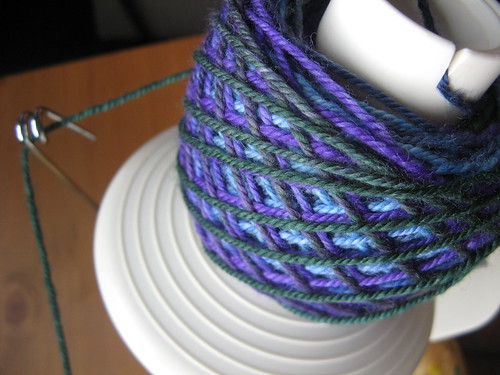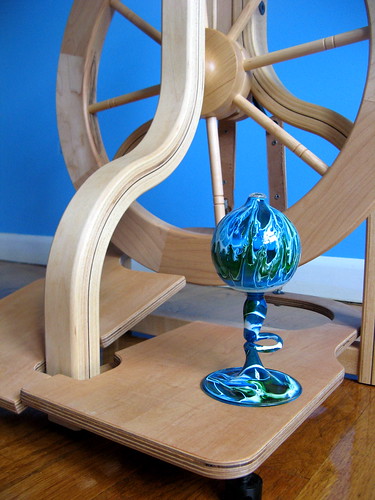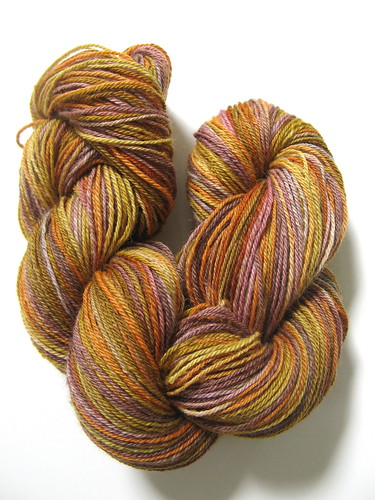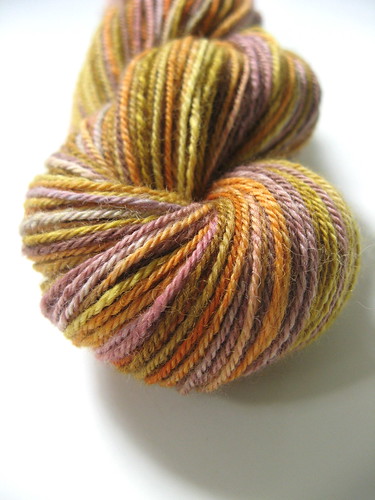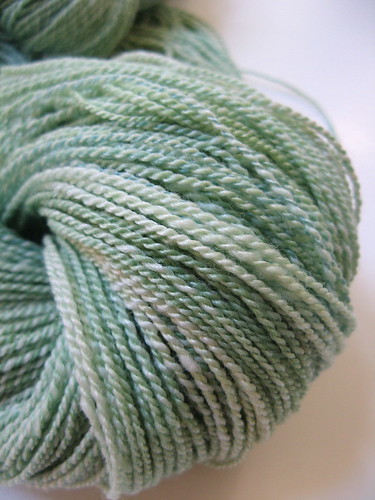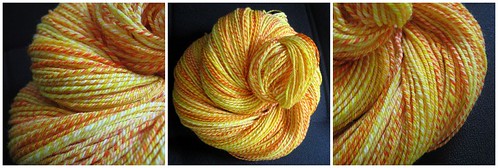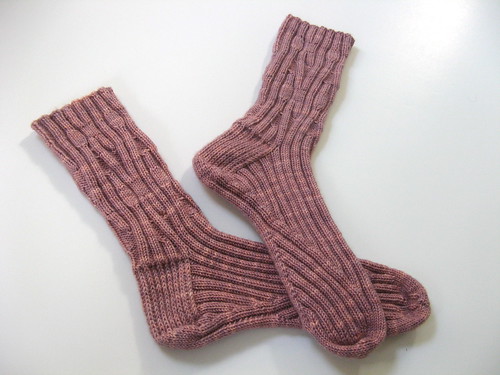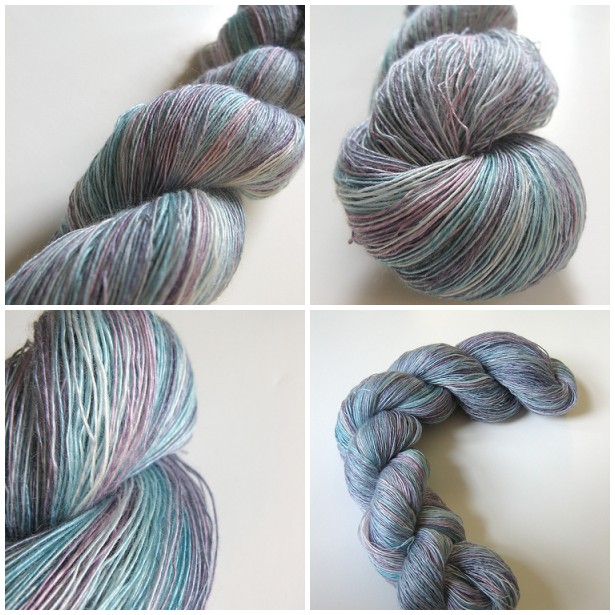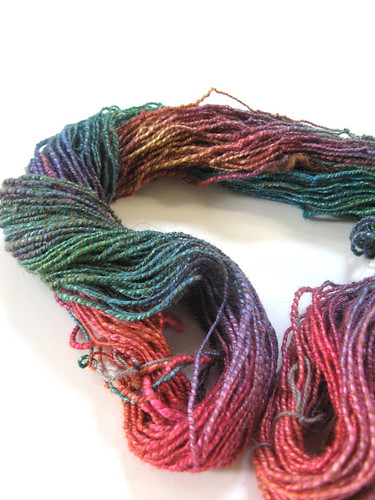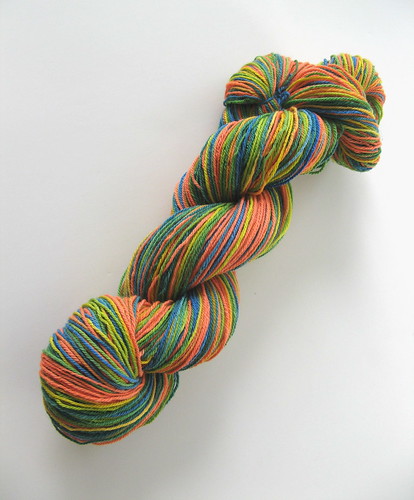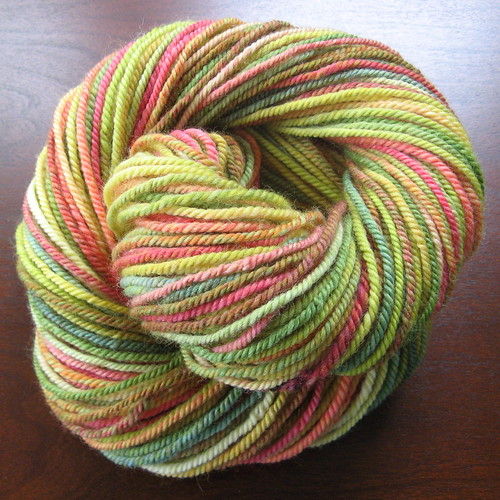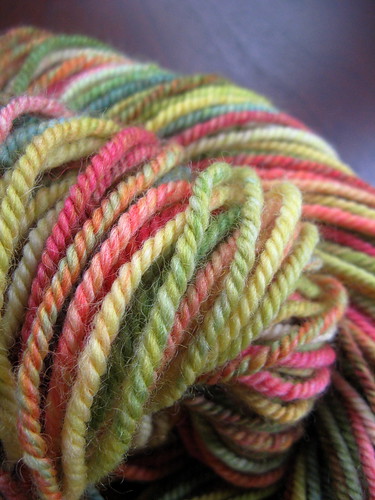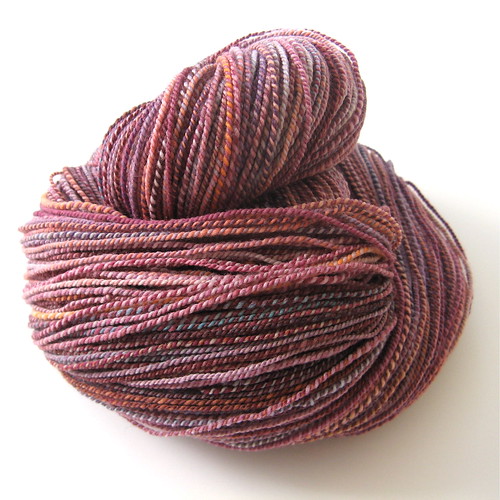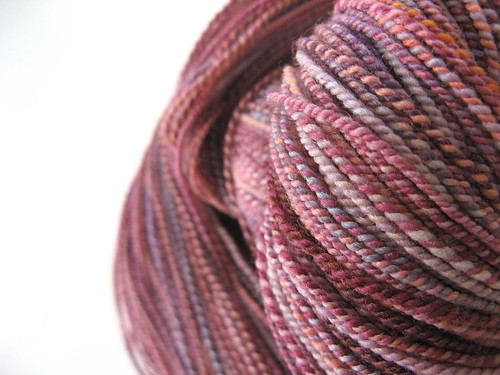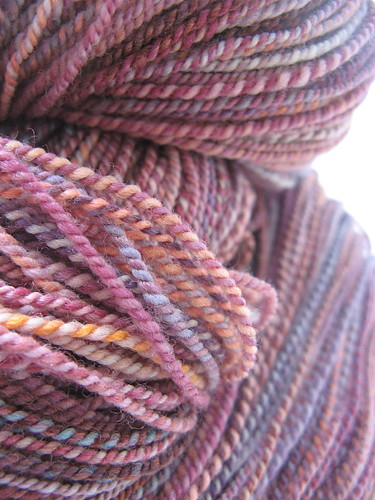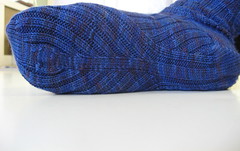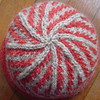If you're cold, put on a hat!
I have a lot of catch-up to do. I'm ashamed of how long ago I finished some of the hats in this post, but let's just say that I've been doing a thorough test-drive of some of them before blogging. You know, just in case...
I'll start out with the hats knit from yarn I bought, and then go on to hats knit from yarn I spun, along with information about the handspun. Thank the Fiber Goddess for Ravelry, which has become my supplemental fiber brain. At least I'm a bit better about putting information in there than I am about blogging in a timely matter, so that something is recorded somewhere when it's time to blog!
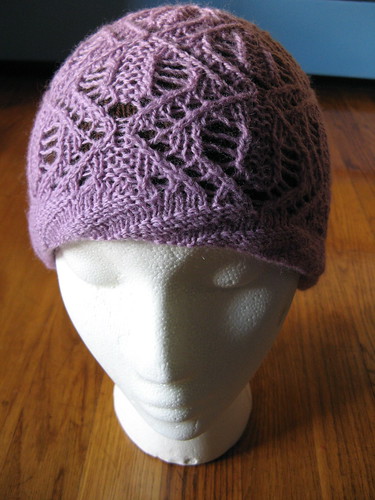
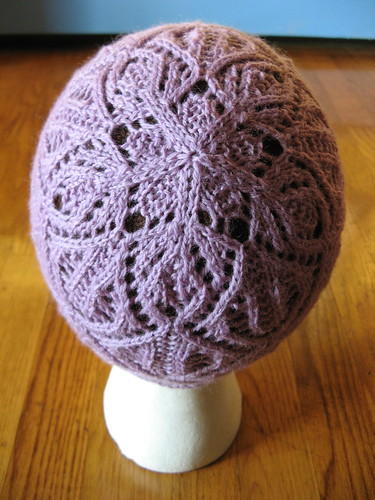
This is the Peek-a-Boo Cloche by Mona Schmidt, from the book Lace Style. The original pattern calls for a sportweight yarn (one of the Louet yarns, maybe?), but when I decided to knit this the colors of leftover Knitpicks Palette sitting in the drawer (from the Fair Isle with Vertical Stripes, from oh so long ago) were calling to me. Palette is a fingering weight, and not a very robust fingering weight at that, but I decided to give it a try. The lining of the hat is knit first, from the top down, so I figured that I'd know fairly quickly whether the yarn would work, and if I'd have to alter the pattern for a vastly different gauge. My head is on the small side, so I had a good feeling about the project, and it turned out that it worked just fine, without any size alterations. The hat is just the right size for my small head, but I wouldn't want the hat to be any smaller. (So copy me at your own risk!)
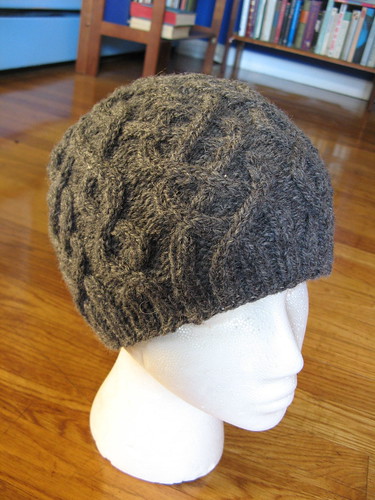
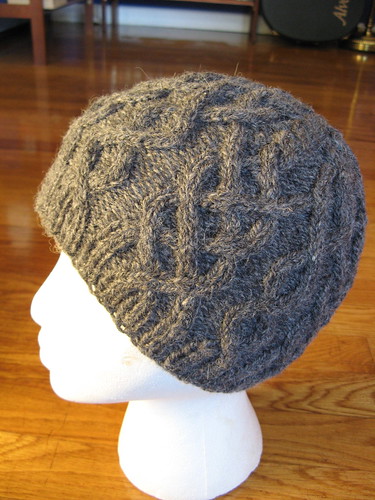
This is Habitat, by Jared Flood. (I always want to say that it was designed by Franklin Habit. Yes, I know all knitting men are not the same person.) I wish I had a better photo of it, but the light was just not cooperating that day, and I haven't had a chance to get a better shot. Which is a shame, because Alex wears it a lot. It was a birthday gift 2 months ago, and I'm delighted with how often he wears it, and how much he seems to like it.
The yarn is Harrisville Highland, leftover from Alex's Cobblestone sweater, which he also wears often enough to make me very happy. Maybe it's lucky yarn, or maybe I'm getting better at knitting things to match his size and taste. (I wear the Rhapsody in Brown sweater more often than he does. It's a bit tight on him, and I can't seem to get a more severe blocking to take. It's a little big on me, but in that just perfect way that makes it incredibly cozy.)
And now onto the handspun. This first hat was quite the bargain. I bought the fiber at New Hampshire Sheep & Wool last May, and only paid $8 for the 4 oz. I believe it's Ashland Bay top, but I didn't realize it at the time. It's not a bad thing, though I feel a bit silly in retrospect, buying such widely available commercially prepped top at a local fiber event. It's 100% merino, and I carded it into rolags before spinning. I found that the fiber was a bit flat at first, and a couple of people suggested that I steam it, to put some life back into it, and re-awaken its merino crimp. That did help, and I was delighted with the soft, fluffy, and lofty yarn that resulted.
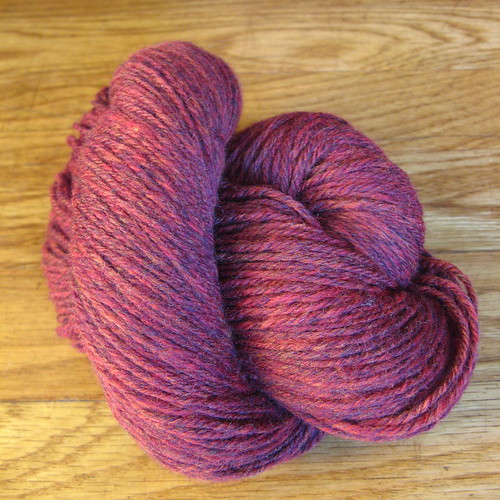
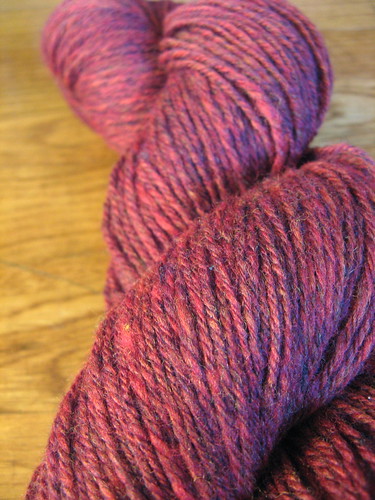
As you can see, and as I think I mentioned in a previous post with yarn spun in a similar way (commercial top carded into rolags), you don't get a perfectly even yarn when you spin longdraw. Especially when it's from rolags, where the fibers are all jumbled together in a chaotic swirl. But I'm learning that knitted fabric can be very forgiving, and that most of the unevenness in yarns like this disappear when you knit them up. It's kind of magical, and only encourages me to spin longdraw more often. I hope seeing hats made from uneven woolen spun yarn gives some of you confidence to try it out, too.
The yarn is a 3 ply DK weight, 13 WPI, 105 grams, and 342 yards.

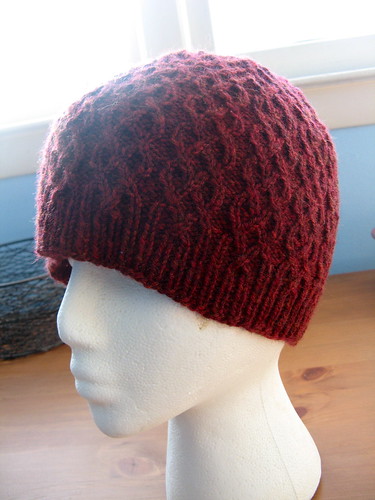
The hat is Shedir, by Jenna Wilson, from the Fall 2004 edition of Knitty. I wasn't sure at first that the yarn would work with this pattern, because such delicate crosses would seem to require the most perfect and even of yarns, to avoid getting lost in the texture of the yarn. But it turns out that slightly uneven handspun works well, too. The cables probably would have popped more if I used a worsted spun yarn, which would be smoother. But I like the subtle and soft look that the woolen yarn gives to the hat. This is my favorite hat, and I honestly can hardly believe that I made it from scratch.
These last two hats are also knit from handspun rolags. These rolags are from washed corriedale locks that I bought from Julie (jsandell on Ravelry) a while ago. Having worked with other corriedale since then, and having discussed the nature of these particular locks with her, I think I've come to the conclusion that this is not typical corriedale. In some ways it behaved more like a longwool would, in that it wasn't as crimpy, and had a very smooth feel to it. In retrospect, it was not the ideal fiber for rolags, since I've found that I prefer rolags and longdraw spinning with very crimpy fibers. But I made it work, and enjoyed the experience.
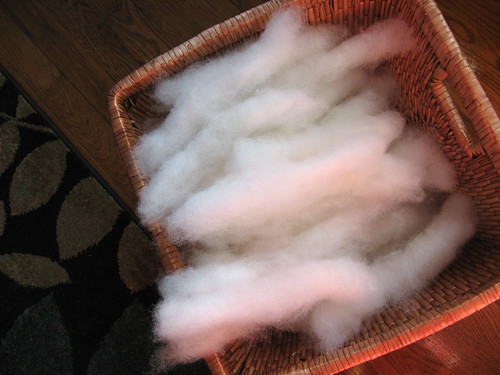
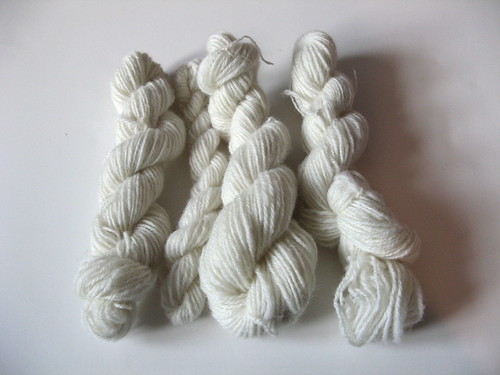
That is about 550 yards of a 3 ply, 9 WPI yarn. It was all spun longdraw from the rolags, and wasn't quite as even as it looked. I don't think it was as even as the merino I spun up for the hat. Next, I dyed it:
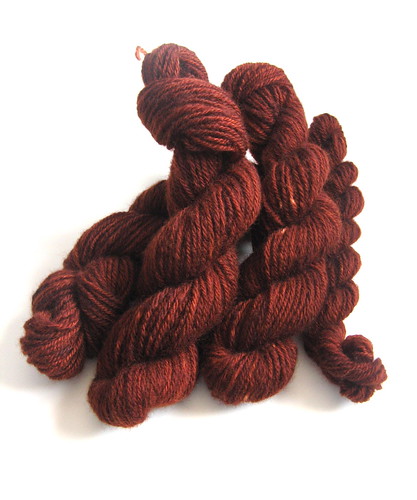
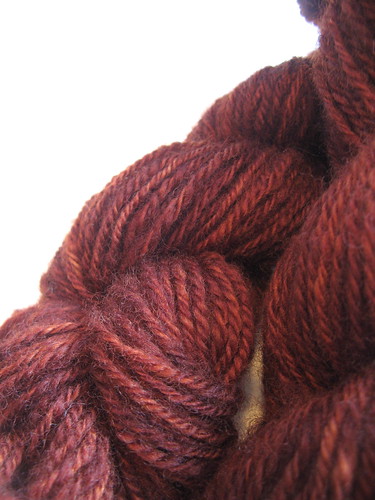
This was my first (and only, so far) experience dyeing anything, and I was happy with the results. It turned out darker than what I was going for, but I think the yarn was just perfect this way, so it was a happy accident.
I knit two hats with the yarn. The first hat was too big for the intended recipient, and the hat would just not shrink, no matter what I did to it. A very strange corriedale, indeed, as I'd expect most corriedale to full easily if given the opportunity. I think it was the relative lack of crimp in the yarn.
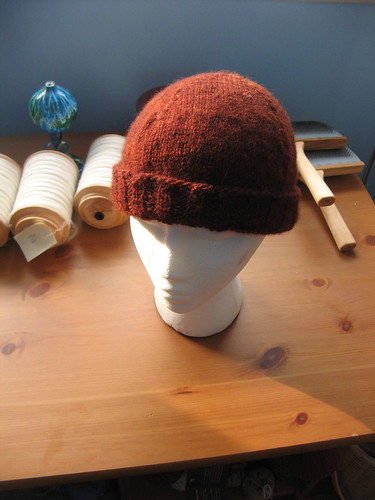

This too-large hat is from Jared Flood's Turn A Square pattern. It's a beautiful hat (if I may toot my own horn), and I'm sure I'll be able to find someplace to donate it. Heck, I know it won't felt in the wash, so I bet that even charities that don't usually take wool (because of felting fears) could make good use of it!
I decided that my second try at a hat for Jan would not only be on smaller needles with slightly fewer stitches, but would also incorporate more of a ribbing-based pattern, for optimal fit flexibility. I decided on the spindle stitch pattern from Charlene Schurch's book More Sensational Knitted Socks.
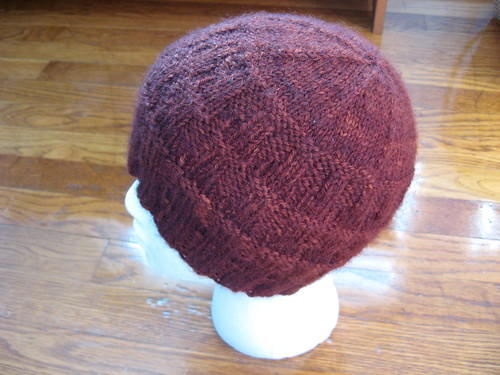
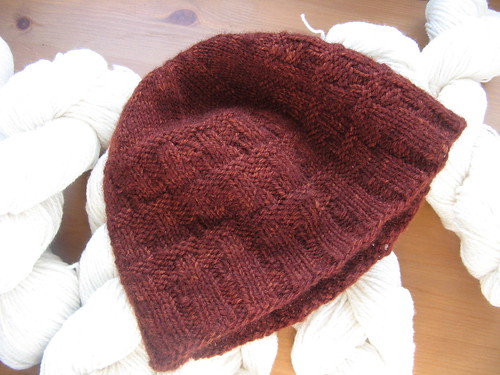
The hat fits her perfectly.
I do have one other hat that I've knit in the past few months, but I'm not blogging about that yet. That hat was also knit from fiber that I prepped (on combs) and spun myself, and uses a beautiful Barbara Walker stitch pattern. I did a ton of work designing a way to decrease the top of the hat in an unusual and interesting way that flows out of the intricate stitch pattern, and am probably going to submit the pattern to the Twist collective, for consideration for their Fall issue. Writing up that proposal is on my to-do list for this long weekend. I really wish I could share the photos with you, because I am immensely proud of the hat. This one was also for a co-worker (a Secret Santa gift), and luckily fit her perfectly on the first try. More on that another time, I suppose.
My spinning wheel has been incredibly busy so far this year. I have finished spinning the yarn for a sweater. That's how busy. More on that soon, I hope.
Oh, and in case anyone was wondering, Sophie was born the day after my last post, and is indeed an extraordinary little person. She has beautiful red hair and at least one dimple, and is so incredibly charming in photos that I fear I may be bowled completely over when I get to meet her in person. To my delight, the sweaters are a bit big on her, which means she gets to grow into them and wear them that much longer.
Labels: finishedproject, handspun, spinning


